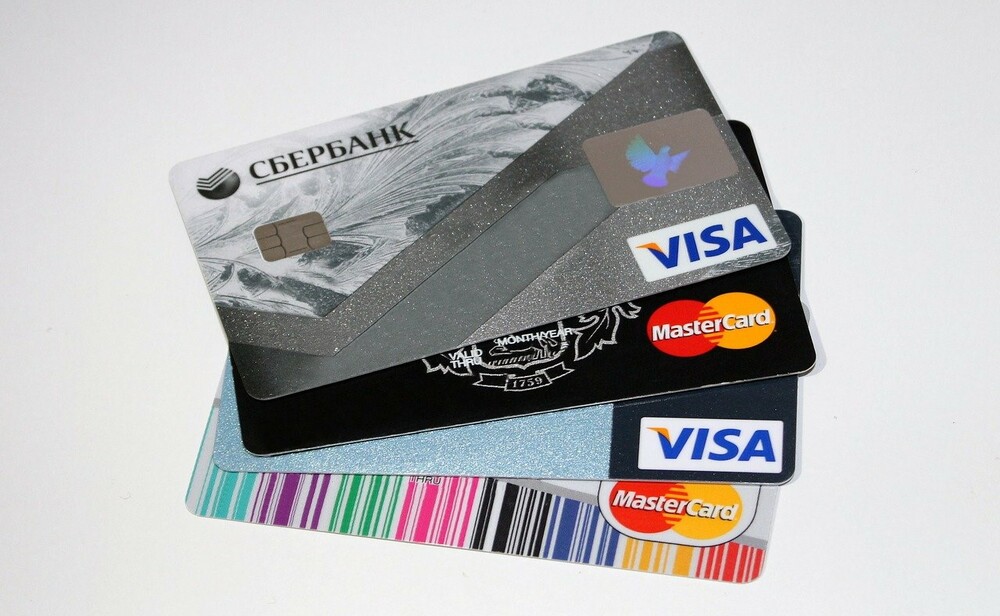What Is the Latest Credit Score Range
Credit Score Ranges – Introduction
Regardless of your background or credit profile, you can fall into the 60% FICO range. You need to understand what is different about this credit score range. It has a slightly different meaning than the other ranges. For example, the 620 score has more purchase credit used than the 620+, 740+, and 760+ scores. The difference between all three ranges is that the credit score range for a file that has 7 years of on-time payments with no collections history and subprime credit is 620+ and lower.

The range for a file with a similar profile but over 25 years of on-time payments with 30+ collections, a personal loan or a consumer loan is 620-659, 740-720 and 760-759. The 620+ score is ideal for credit cards, auto loans, and consumer loans. It is a solid score to have for auto insurance. The 740+ score has more than 30 years of on-time payments with good-to-excellent credit. This score is ideal for credit cards, loans for boats and other recreational vehicles, home equity loans, and personal loans. This is a high score for home mortgages.
The 760+ score is ideal for high-end autos and subprime loans. Because the 620-659 range is subprime and the 620-759 range is higher than the 740-760 range, this is the range to focus on. If your credit score is 739 or below, this is the range to focus on. The 740+ score range is commonly used for home mortgages and auto loans, but you can usually get your first mortgage with an overall 700 credit score. The mortgage loan approval process usually starts with a credit score of 740.
You Need a High Credit Score to Get the Very Top Credit Scores
If you know your credit history, you can get a sense of how you compare with your peers. If you have paid off your credit cards, you may have a good idea how well you handle your credit. Here is how the biggest three credit bureaus compare the ranges for the maximum scores they permit for the very best consumers (as defined by FICO) and the big three national credit bureaus:
- VantageScore uses a different approach to allow people with slightly lower FICO scores a chance at the maximum score. The maximum score on VantageScore is 780, which is close to the maximum score on FICO. However, with VantageScore, the minimum score required is 660.
- Credit Score Compare uses a 0-100 score range. The minimum is six, while the maximum is 800.
- Experian uses a similar score range, but it is a little different. The score required is six. For the very best consumers, it is 780. However, for the most creditworthy borrowers, the score is 780-783.
FICO Score Range
The FICO scores range is a little bit different. It allows the scores to be any combination from excellent (1040) to poor (530). It divides those scores into ranges of less than or equal to 620. This is known as the “Good” range. The scores in the “Fair” range are from 620-659. There is a slightly lower range, ranging from 660-700, and it is for those with less than exemplary histories.
For the “Advantage” consumers, FICO has a slightly higher range. It divides those scores into lower (640) and upper (700). It is important to know the difference between the two main credit score ranges. Understanding them can help you be in the “Good” or “Advantage” range. You might even consider a brand-new consumer, such as the younger college student who has never had credit before.
Do You Need the FICO Score Range?
There is no point in getting the best score you can get in the “Good” range. Even if you have little to no credit history, you should still be in the lower half of the credit score range for your credit history and your risk level.
- If you want a credit score in the “Good” range, it may be helpful to get the free credit score comparison tool on Credit.com. It will let you determine the best score. You will be able to find the “Good” range.
- Your FICO score in the “Fair” range will give you more protection from high interest rates, for example. High credit score borrowers will pay an average of 19.64% for their revolving debt. For those in the “Good” range, the average is 16.56%.
Keep in mind that credit scores have been evolving. New rules have been issued that affect how credit scores are calculated. It is up to you to understand and decide whether they affect your life or not. If you have a significant credit history, you will probably have a higher score than your score in the past, even if the new calculation rules reduce your credit score.
If you think you may want to improve your credit, you should contact your credit counselor to get advice. Your counselor will explain how credit scores work and why you should improve your score. They will also be able to provide you with resources to help you improve your credit rating.
Some useful resources to help you improve your credit rating
Here are some great resources to improve your credit rating and begin to build a great credit history.
- Credit.com – Credit.com has an excellent service that compares credit card interest rates. You can get free credit scores from Credit Karma and Mint. If you choose to use Credit.com, you can also access a free credit report from each of the three credit bureaus (Experian, Equifax and TransUnion).
- Credit Helpline – If you are concerned that you have a problem that you need to resolve quickly, contact a credit counselor. Contact the Federal Trade Commission about the credit counseling center you want to use. You can also check out information from the National Foundation for Credit Counseling. If you have a problem that is not credit related, a credit counselor may be able to help you find other services or resources you may be eligible for.
- FreeCreditScore.com – FreeCreditScore.com is a nonprofit credit score resource for consumers. You can sign up for your free credit score and get information about how to improve your credit rating.
- CreditKarma.com – If you are a member of the Credit Karma credit marketplace, you can get information about your credit rating, make payments and monitor your credit score.
- Credit Depot – A section on Credit Depot offers an overview of credit repair, credit history updates, credit history inquiries and credit scores. You can also access Credit Karma’s Free Credit Score, Review of Credit Repair Companies and Credit History Updates.
- National Foundation for Credit Counseling – Check out the National Foundation for Credit Counseling for an overview of how to improve your credit rating. You can also find a credit counselor near you or see a sample credit report. You can also contact the National Foundation for Credit Counseling for more information.
Effects of a Negative Item on Your Credit Score Range
The effect of a negative item on your credit score range depends on when and how long it is on your credit report. If you file a dispute for a disputed item within 90 days of the report date, you can begin the process of bringing it to the consumer reporting agency’s attention. If it’s on your credit report for more than 90 days, the FICO score formula looks at all of the negative items on the report, taking them into account and calculating your credit score to its highest value.
A FICO score is the best metric to use to compare your credit score with others. The credit scores in the 620-659 range have similar scores as the 740-760 range. In some cases, there are other factors in the 620-659 range that might be beneficial to your credit score. Here is a look at three of the main areas that help determine your credit score:
- Credit utilization – how much of your available credit you are using
- Credit mix – the mix of credit accounts
- Credit score – the overall credit score of your FICO score
For example, it might make sense to have three credit cards with no balances and a loan on your car. When you are diligent about paying your bills and managing your credit mix, it could result in a higher credit score than if you had a lower credit score due to the use of debt.
Compare Credit Score with the People of Your Age Range
Another way to look at this is by comparing your credit score with other people in your age range. If you are younger than 25 and have a 620-credit score, that means you have a lower credit score than 70% of your age group. A 620-credit score should be better than a lower score, right?
Trying to improve your credit score in one area is not a good plan. When looking at your credit score with any regularity, be sure to check your credit utilization ratio to see what percentage of your credit line you are using and whether you have too many credit cards. A lower credit utilization ratio is a positive. If you have a big balance on your credit card, you need to pay it off or close your accounts.
The last negative item is a bankruptcy. According to the latest data from the U.S. Census Bureau, there were 3.2 million bankruptcies in 2016. This means that about 1.7% of all people in the U.S. are living with a negative credit score, but a positive score if you have no bankruptcy.
When You Are Getting Ready to Refinance a Mortgage
You can add a mortgage loan to your FICO score range with the following steps:
- Call the mortgage lender that you are interested in refinancing with to see if they have a refinance for your mortgage. Determine what type of loan you are refinancing with: a conventional, VA or adjustable-rate loan
- If your current loan has a 10% down payment requirement, that is less than the required minimum for most refinances and qualifies you for a lower mortgage rate. Depending on your credit score, you may qualify for a higher loan amount.
- The questions you ask the lender can help you determine the best refinance option. For example, the lender will want to know how long you have owned your home. Do you rent your home? If not, you can get lower loan amounts. The credit score will play a part in the mortgage loan negotiations too.
How Can Your Credit Score Range Be Adjusted?
Two factors can cause your credit score range to be adjusted.
- The first is missing a payment. Missing a payment is not the end of the world, especially for those with prime or excellent credit. Most credit cards allow customers to carry over or restart an account if there is a missed payment. It’s up to you how to handle the missed payment. Many companies will allow for free credit score monitoring and potentially offer a low-interest loan if you are under 21 or new to credit. Many credit card companies will offer you a limit increase if you are behind on payments. So, you should be careful when thinking about missing a payment.
- The second factor is a very negative report that could affect your credit score. If you have too many negative items on your report, then it could affect your credit score for a couple of years before it starts improving. This is a bit of a rare situation, but it can happen. Most customers will experience financial hardship before they report a negative item. It is best to take preventative action before a negative item is reported to the credit bureau.
Conclusion
Having a good credit score range to start out with will help you avoid mistakes that can cost you money. Most lenders will use a FICO score range when determining your mortgage rate and other decisions. It is best to check out the FICO score range before you take any action to improve your credit score. For example, if you want to lower your interest rate, the lender will use a FICO score range. If you want to improve your credit score, then the lender will use your FICO score range. Make sure to check out your FICO score range before making any payment or action to improve your credit score. If you have never checked your FICO score, be sure to do so. It can be a quick and painless experience. You can check it online.
Must Read: When Is the Best Time to Check Credit Score





